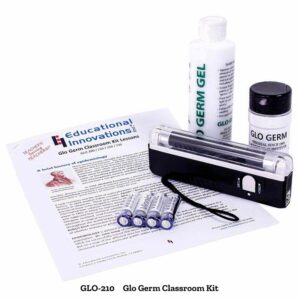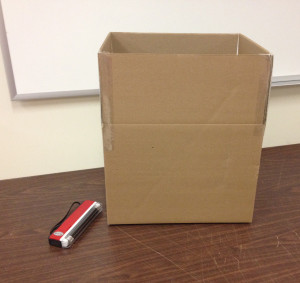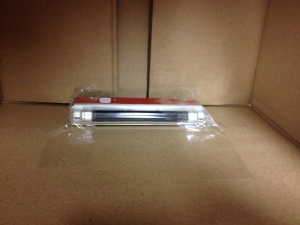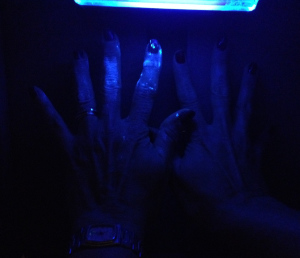 by: Priscilla Robinson
by: Priscilla Robinson
Talking about Infectious Disease
These days, it’s hard not to hear reports about the spread of infectious disease, from serious viruses like Ebola to the “common” cold. There are ads for flu shots and cold remedies, nightly media coverage about rampant epidemics all over the world, and pundits predicting whether these contagious diseases might someday get to this country.
So how is this affecting your students? Are they asking questions? Are they anxious about where these germs may be lurking, and whether they or their families are in any danger?
As a teacher, I’ve found that the science classroom is the perfect environment to help students understand the world around them.
A few years ago, my students and I survived an outbreak of the Swine Flu. So many kids were getting sick that our school had to establish a quarantine room to isolate ill students until their parents could pick them up. During this time, I set up stringent hand-washing techniques for students (and myself), as well as protocols for disinfecting desks, chairs and door handles. Ultimately, my students had a lower rate of absences than their peers, and I stayed healthy as well.
Below you’ll find two fun and engaging classroom activities related to infectious disease transmission and prevention. Try them with your students!
Bug in the Classroom
Grades: K-12
Learning Goals:
- To demonstrate how easily an infectious disease can be transferred from person to person.
- To promote an open discussion of proper hygiene behaviors that can keep students safe.
Materials:
- Glo Germ powder – It fluoresces under ultraviolet light!
- A portable ultraviolet light, 18″ or larger
- Before class (out of sight of the students), sprinkle the palm of your right hand with Glo Germ powder.
⋅ - Ask for five volunteers. Greet each volunteer student by shaking hands and then have them return to their desks.
⋅ - Instruct all the students in the class to stand up and greet any three classmates, shaking right hands each time.
⋅ - Once this has been accomplished, ask the students to return to their places.
⋅ - Darken the room and shine the UV light onto your right hand. Explain that you’ve sprinkled a harmless powder onto your hand that happens to glow under ultraviolet light. This powder is made up of tiny particles about the same size as bacteria.
⋅ - Say, “Today we’ll pretend that this powder is a bacterium which causes a disease, and that I (the teacher) came to school sick today.”
⋅ - Shine the UV light onto the students’ hands. Have them look around the room. Explain that anyone whose hands are glowing has now caught the same “disease” you have, and is contagious.
⋅ - Discuss these questions: Are they surprised at the number of students who got “sick”? How many students do they predict would have gotten “sick” by the end of the school day? What can we do to prevent spreading actual diseases to our classmates and families?
⋅ - At the end of the discussion students should wash their hands with soap and water. Using the UV light again, students are able to examine how well they washed their hands. Did they miss any spots? Are their hands completely “germ”-free? This will opens up a whole new discussion.
Who Is Getting the Flu?
Grades: 3-12
Learning Goal:
- To demonstrate how a flu shot can help to prevent you from getting the flu.
Materials:
- Glo Germ powder – It fluoresces under ultraviolet light!
- A portable ultraviolet light, 18″ or larger
- A small paintbrush
- Stickers
Directions:
- Before class (or out of sight of the students), dip the paintbrush in a small amount of Glo Germ Powder, then use the paintbrush to “infect” a few frequently-used classroom objects (manual pencil sharpener handle, door handle, the keyboard of the classroom computer, etc).
⋅ - As students enter the classroom, randomly place a sticker on about a third of your students’ shoulders. Tell them you will be explaining the stickers later, during the class.
⋅ - Have the students move about the classroom in their normal routine.
⋅ - At a transition period, announce, “I am conducting a Flu Bug Check.”
⋅ - Darken the room and use the UV light to check students’ hands, faces, mouths, noses, etc. Point out spots where the Glo Germ Powder has spread. (It’s amazing where the powder travels!)
⋅ - Explain to students that anyone with glowing spots has come in contact with the flu virus (in this case, harmless Glo Germ Powder). Ask students if they think they would get sick if the powder had been a real infectious disease. Did they realize that they were spreading germs around? What might happen if they went home and continued to touch objects around the house?
⋅ - Point to the stickers that you placed on some students’ shoulders. Explain that the stickers represent a vaccination against the flu virus. “Good news, the students with stickers got a Flu Shot!”
⋅ - Open a discussion with them about who might get sick? Who might pass the bug on to other students more easily and how? How might students have a fighting chance to beat the bug?
Building Your Own Glow Box
Materials:
- A cardboard box (big enough to fit your UV light fixture and for students’ hands to move around inside)
- A portable ultraviolet light, 18″ or larger
- Duct tape
- Scissors
Choose a cardboard box that is deep enough for students to place their hands inside. Use duct tape on edges to keep flaps from folding down into box.
Secure the UV light inside one corner of the box with duct tape. Make sure you don’t cover the ON/OFF switch with tape!
Turn on the ultraviolet light and invite students to place their hands inside the box. If they have touched anything dusted with Glo Germ powder, those areas will fluoresce brightly.
For more about teaching disease prevention, see our “Has the Swine Flu Affected Your School?” blog.
Priscilla Robinson works with Educational Innovations as a consultant to link teachers with ideas, lessons and materials to enrich their science classrooms. She admits to being a lifelong learner. “Education and Science are both dynamic. I feel it’s important stay current and flexible!” In addition to teaching middle school science, Priscilla provides professional development for teachers. She has a passion for teachable moments and loves engaging young scientists’ curiosity to explore, take risks and learn at a higher level of understanding.






Great ideas. Thank you.
You’re very welcome!